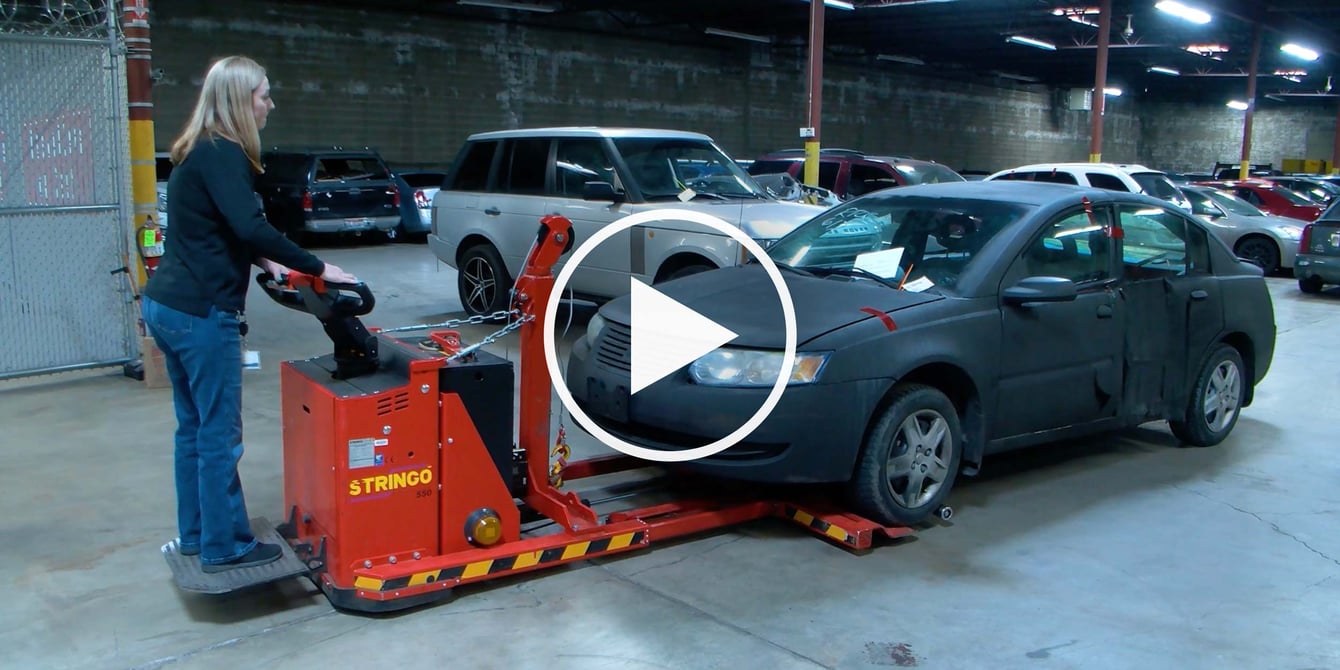Video & Image Copyright © Spokane Police Department
Cars mean many things to many people. They may even be a crucial piece of evidence in a murder investigation. At the Spokane Police Department in Washington, staff use an electric vehicle mover to handle cars they have in custody without needing to touch them. This investment has not only improved efficiency, but also saved the city’s taxpayers hundreds of thousands of dollars. This article explains how.
Ever wondered what happens to a car that’s been used to commit a crime? If the crime scene is in or around Spokane, Washington, the car is very likely to end up at the vehicle storage area of the Spokane Police Department’s Property & Evidence facility. Hundreds of vehicles are kept here – some of them for more than ten years – while the criminal cases they were involved in are investigated and taken through the court system.
“It's like a big game of Tetris”
Cars and trucks are constantly moved around as cases are closed or advanced – or vehicles from new cases are brought in. In their daily operations, SPD’s Evidence Supervisor Kevin Berry and his team have several challenges in common with other vehicle storage facilities, such as garages or car dealerships. Using the available floor space optimally, and moving cars in tight spaces, are no easy tasks:
“You could say it's like a big game of Tetris”, Kevin Berry explains. “Wherever there's a space, we try and get vehicles into it pretty tightly. Space is obviously an issue. We are over capacity for what we would like it to be, in terms of manoeuvrability and ease of use.”
In a police department, there’s one extra level of complication compared to other facilities. The vehicles that need moving are, or contain, evidence that mustn’t be tampered with or touched. So how can you move them without pushing them or getting inside?
Before, the Spokane Police Department relied on hiring tow trucks – a solution that was neither time nor cost-efficient. But in 2012, the City of Spokane purchased a Stringo vehicle mover; an investment that paid itself off within three years. After about a decade, the Stringo had saved the city’s taxpayers more than 300,000 dollars in tow bills while moving well over 5,000 vehicles. Today, law enforcement agencies from around the region travel to Spokane to test drive SPD's Stringo.
The satisfaction of a job well done
The successful utilization of a vehicle mover in a police department illustrates the versatility of a tool that’s otherwise primarily associated with the automotive industry. The ‘typical’ Stringo user tends to move vehicles in a manufacturing or testing setting, although the machine is also popular among vintage car museums.
In contrast to a car fresh off the assembly lines, or a priceless collector's item, the vehicles in SPD's Property & Evidence facility all have stories of crime and tragedy attached to them. But to Kevin Berry and his co-workers, the main focus is getting the job done. This means wrapping up cases, clearing the vehicles, and returning them to their owners, or otherwise disposing of them.
“A vehicle that ends up here is just an item that had something bad happen in or around it. We don't dwell on that. But it's rewarding to be able to find stolen items, guns, computers, or other things that somebody else hasn't found and be able to return those to the rightful owner”, Berry explains.
—
Want to learn more about cars with fascinating stories? Don’t miss this interview with Toby Stinson at the Owl’s Head Transport Museum in Maine. You’ll get a glimpse of a 1929 Rolls Royce that originally belonged to Hollywood ‘it girl’ Clara Bow.
Video & Image Copyright © Spokane Police Department





